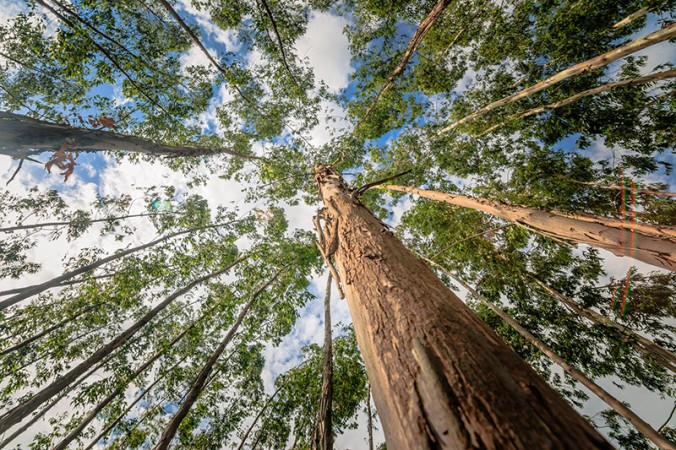Considering that Australia is the home of the gum tree, compared with other countries, we have been slow in planting our own eucalypts in tree plantations. Although more than 14 million hectares of gum trees have been planted across the world.
Eucalypts account for more than 70 per cent of the trees in Australia’s natural forests and woodlands, growing in a wide range of climates from the hot tropics to near-desert inland plains to alpine snowfields. Evolving from rainforest ancestors, eucalypts have adapted to an environment where nutrient-poor soils are common and a dry environment has become the norm.

Eucalypt plantation in Brazil… more than 14 million hectares of gum trees have been planted worldwide.
The iconic eucalypt group is comprised of more than 700 species of trees and shrubs. Many secrete a resinous gum – hence the name by which they are known at home and around the world: gum trees. They have distinctive foliage, attractive multi-stamened flowers and frequently ornamental peeling bark. The seeds are contained in woody and sometimes hard capsules, which protect them from fires and insects.
Ashley Hay1 says of the gum tree:
Over 700 species make up the genus and, with a dozen exceptions, this is the only place where they grow naturally – from shaggy-barked blackbutts on the east coast’s dunes, to the bright bark of snow gums up at the alpine tree line, to silky-white ghost gums in the centre. There are scrubby mallees that won’t pass shoulder-height, and pillars of mountain ash that shoot a hundred metres into the sky. In Western Australia there are dark-leaved jarrahs that can grow to either of these heights. Site-specific, they carve the country into distinct ribbons and patches: one species grows up a hill and stops where another suddenly starts and grows down the other side.
